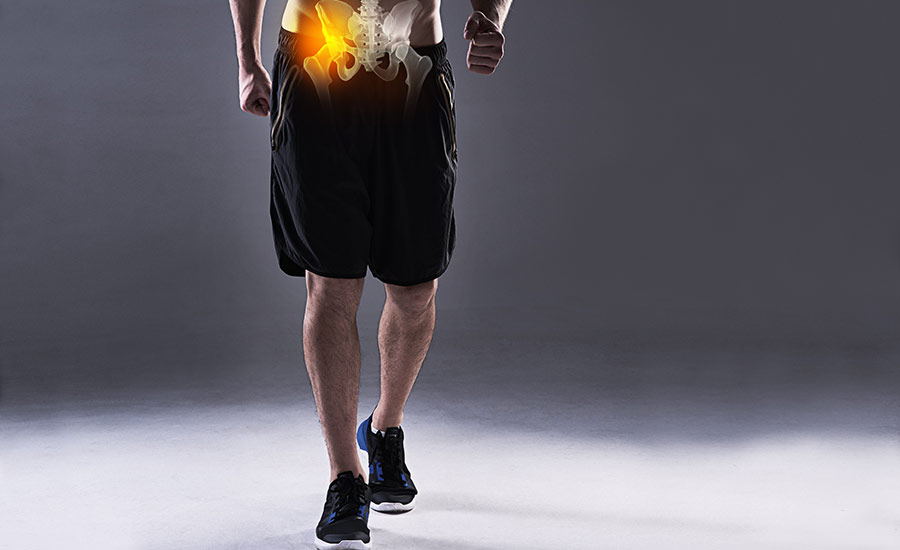
What Is Radiofrequency Ablation?

Meet Our Radiofrequency Ablation Specialists
Find a Specialist Near You
Get the care you deserve close to home at one of our New Jersey or New York Locations.
About Radiofrequency Ablation Treatment

Radiofrequency ablation treatment (RFA) can help relieve pain for:
- Chronic pain sufferers: RFA can help relieve pain throughout the body — particularly in the lower back, neck, and joints.
- Patients with post-surgical pain: RFA can help manage lingering pain after surgery, if other treatments aren’t effective.
- Patients with peripheral nerve pain: RFA can treat certain peripheral nerve conditions.
- Patients with arrhythmia: Outside of pain management, RFA can also be used to treat certain types of cardiac arrhythmias, including atrial flutter or atrial fibrillation. By targeting the tissue that’s causing abnormal electrical signals, RFA can restore a regular heart rhythm.
- Patients with certain types of tumors: RFA can be used to treat some small tumors — particularly liver tumors. By applying radiofrequency energy, the tumor cells are heated and destroyed.
Because RFA has many diverse applications, it’s important to trust your care to highly skilled specialists. At OrthoEast, we proudly house some of the most skilled experts in the field.
Our radiofrequency ablation specialists at OrthoEast include Dr. Anil Sharma & Pam D’Amato.
Our team is board-certified and fellowship-trained, which allows us to provide comprehensive care to each and every patient, answering questions, increasing comfort and putting your mind at ease every step of the way.
Symptoms & Conditions That Can Be Treated By Radiofrequency Ablation
Radiofrequency ablation is typically performed to alleviate chronic pain.
The most common symptoms that can be treated by radiofrequency ablation include:
- Chronic joint pain
- Facet joint pain
- Sacroiliac joint pain
- Trigeminal neuralgia
- Cardiac symptoms
- Tumor symptoms
- Varicose veins
- Peripheral neuralgias
- Arthritis-related discomfort
How Is Radiofrequency Ablation Performed?
Radiofrequency ablation utilizes radiofrequency energy to impede the pain signals transmitted to the brain.
Here’s a detailed breakdown of the process:
- Preparation: Depending on the pain’s origin, the patient will either lie face up or face down. The area designated for treatment is sanitized, and a local anesthetic is administered to numb the site.
- Needle placement: With the assistance of fluoroscopy (a kind of live-action X-ray), a slender insulated needle is penetrated through the skin, directed to the nerve believed to be the pain source.
- Position verification: After the needle’s positioning, a minimal electrical charge is passed through to ensure its proximity to the intended nerve.
- Ablation phase: Once correctly placed, a radiofrequency current courses through the needle. This current generates heat surrounding the nerve tissue, resulting in a lesion or minor burn, effectively hampering the nerve’s capacity to relay pain signals to the brain.
- Completion: After the ablation, the needle is extracted, and a small dressing is placed over the entry point.
How To Prepare for Radiofrequency Ablation
To prepare to radiofrequency ablation:
- Undergo a medical evaluation: Inform your doctor about all medications you are currently taking. Some medications — especially blood thinners — may need to be temporarily stopped prior to the procedure. Share your medical history, including any allergies and previous surgeries, with your doctor.
- Fast: You may be asked to abstain from food and drinks for a certain period before the procedure — usually about 6 to 8 hours.
- Pack appropriate clothing: Wear comfortable, loose-fitting clothing on the day of your procedure. You might also be given a hospital gown to wear.
- Make arrangements: Since local anesthesia is commonly used before the procedure arrange for someone to drive you home after the procedure. It’s not safe to drive or operate heavy machinery for at least 24 hours after receiving sedation.
- Avoid alcohol and tobacco: Refrain from consuming alcohol or using tobacco products for at least 24 hours before the procedure.
- Additional tests: Depending on your medical history and the reason for the procedure, your doctor might order additional tests such as blood work or imaging scans ahead of the RFA.
How Long Does Radiofrequency Ablation Take?
Radiofrequency ablation typically takes between 30 to 90 minutes, depending on the specific area being treated and the individual circumstances.
This includes preparation, needle placement, testing for accurate positioning, the actual ablation process, and post-procedure care.
What To Expect After Radiofrequency Ablation Treatment
After undergoing radiofrequency ablation, you should be aware of both the immediate and longer-term effects and requirements.
Here’s what you can typically expect post-procedure:
- Recovery: After the procedure, you’ll likely be monitored in a recovery area for a short time. This is to ensure you’re recovering well from the procedure and any sedation.
- Sedation effects: If sedatives were used, you might feel drowsy for several hours. You’ll need someone to drive you home as it’s unsafe to drive or operate machinery for at least 24 hours after sedation.
- Temporary discomfort: The treated area may feel sore or numb for a few hours to a few days. This is a normal reaction, and over-the-counter pain relievers can often help manage this discomfort.
- Swelling and bruising: Minor swelling or bruising at the needle insertion site is common and should subside within a few days.
- Pain relief timeline: You may experience immediate pain relief after RFA, or a gradual decrease in pain over several weeks. There’s also a possibility of a brief pain flare-up before it starts improving.
Radiofrequency Ablation Recovery Time
Recovery time after radiofrequency ablation can vary based on the specific area treated, your overall health, and how your body reacts to the procedure.
Here’s a general timeline of what you can expect:
- Immediate post-procedure: You are monitored in a recovery room for a short period, typically about 30 minutes to an hour, to ensure there are no adverse reactions to the procedure or sedation.
- First week: Any soreness, numbness, or swelling at the treatment site typically diminishes over the course of several days to a week. You can return to work and their regular activities within a day or two, though it’s recommended to avoid heavy lifting or strenuous exercise for the first week.
- Long-term recovery: The duration of pain relief from RFA varies widely. For some, relief can last several months, while for others, it might extend over a year or even longer. As the nerves regenerate over time, some pain might return. If this happens, the procedure can be repeated.
- Pain fluctuations: You might experience a temporary increase in pain immediately after the procedure. This “pain flare” is not uncommon and should resolve within a few days. Thereafter, over the next few weeks, pain levels usually decrease as the full effects of the RFA set in.
The total recovery time can range from several months to a year or more, depending on your exact situation. It is important to follow all post-surgery instructions provided by your surgeon to ensure a successful recovery.
Schedule a Consultation for Radiofrequency Ablation Treatment at OrthoEast
We know that the thought of a surgical procedure can be scary, and reading through all this information at once might be overwhelming. That’s why our compassionate team at OrthoEast offers personalized care every step of the way, to answer your questions and put your mind at ease.
Find us at one of our locations in New Jersey or New York to schedule a consultation:
- Wayne, NJ
- Morristown, NJ
- Clifton, NJ
- Linden, NJ
- Wall Township, NJ
- New York, NY









